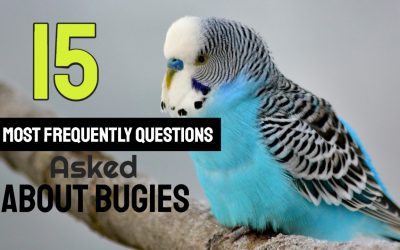1. Macaws Can Live More Than 80 Years
Macaws live to be around 60 years in the wild on average, and in some cases this can extend for up to 80 years and even as long as 100 years. When kept as pets, macaws are often known for outliving their owners! In the wild, their long life span can be attributed to their relative lack of predators.
2. Macaws Are the Largest Parrots
There are around 376 species of parrot throughout the world, and macaws are the biggest of all of them. The largest species, the Hyacinth macaw can span up to 3.5 feet in length, including a huge wingspan of around 4 to 5 feet. The largest macaws weigh between 2 and 4 pounds and they have especially light bones which aid their flight.
3. It Is Possible to Breed Hybrid Macaws
As many different varieties of macaws as there are naturally, breeders in the pet trade have also been able to make bold and colorful hybrid macaws.
Examples of hybrid macaws include the Catalina macaw, the harlequin macaw, and the Camelot macaw. While these birds have been extraordinarily popular among pet owners, many oppose the breeding of hybrid macaws, since these birds do not occur naturally in the wild.
4. Macaws Habitat of choice is the tropical rainforest
Macaws are native to South and Central America, found anywhere between Southern Mexico and Northern Argentina. They prefer rainforests, but can also be found in other types of forests as well as woodland and savannah-like habitats. Types of macaws that are particularly common to the Amazon include the blue and yellow macaws, the scarlet macaw and the red and green macaws, along with numerous others.
6. Some Macaws Are Strong Enough to Crack Coconut Shells
Hyacinth macaws have enough strength in their massive beaks to crack a coconut shell.
Despite their impressive strength, hyacinth macaws are known as the “gentle giants” of the macaw world due to their sweet and affectionate dispositions, especially when raised as hand-fed babies.
Other types of macaws also have powerful and impressive beaks, making them a force to be reckoned with during acts of aggression or bouts of hormonal behavior. This is a major reason why macaws are generally recommended only for those who have experience keeping large parrots.
And to reiterate, macaws, like all parrots, need social interaction and socialization so they don’t grow bored. A bored macaw will chew on any wood it can find, and with its powerful beaks, this can mean serious destruction.
7. Macaws have a peculiar relationship with poison
Their diet mainly consists of fruits, seeds, leaves, flowers and nuts. Most species possess a large and extremely powerful beak which they use to open nut shells, including such foods as tough as coconuts. In the Amazon, macaws can be seen congregating at clay licks along river banks where they feed on the damp soil. There are various theories about why they do this. It may be a way for them to neutralize the assorted toxins in their fruit and seed-filled diet and to aid digestion. Others have highlighted that clay licks are a valuable source of minerals, particularly sodium which is hard for animals to obtain in the rainforest. Whilst macaws are apparently immune to the poisons found in many of their foods of choice such as the seeds of Hura crepitans, they are thought to find cherries, avocados and chocolate poisonous.
8. Macaws typically mate for life
Once they reach breeding age at around 3 to 4 years old, macaws will pick a partner and stay with them for life. What’s more, pairs spend a great deal of their time together, not only for breeding, but also to share food, groom and in caring for their young. They can also be observed flying close to each other throughout the forest canopy.
9. Macaws are pretty loud
You will most likely hear a macaw before you see it. These birds are highly intelligent and gregarious creatures that congregate in flocks of anywhere between 30 and 100 individuals. Their loud calls, squawks and other distinctive vocalizations can be heard reverberating throughout the jungle, especially in the early morning. All this noise isn’t just for entertainment purposes. It’s used as a way to mark territory, communicate with the flock and identify partners.
10. Some macaws can mimic human speech
Whilst macaws can’t exactly talk, they are famous for their ability to copy human speech, along with other noises in their environment. In captivity, they can be trained to imitate and practice specific words until they perfect exact sounds and even accents. But why do macaws mimic people? In short, they are highly social and intelligent creatures, and are thought to have a particularly well-developed vocal learning centre in their brain. Wild macaws are naturally programmed to create and respond to very specific sounds made by their family and wider flock members. In fact, a parent will give each of their chicks its own “name” and all members will know how to reproduce these individualized calls.
11. Almost all macaw species are either threatened, critically endangered or extinct
Scientists have identified a total of 22 species of macaws. Of these, five are extinct (including the glaucus macaw and Spix’s macaw), three are critically endangered (the hyacinth macaws, red-fronted macaws and blue-throated macaws), four are listed as endangered, whilst all the rest are considered to be under threat. This pessimistic state of affairs is largely a product of illegal trapping for the bird trade. The birds’ charisma and entertainment value has made them popular pets worldwide. As with many other Amazon bird species and wildlife, deforestation and habitat degradation also pose a significant threat to population numbers, as seen recently by the devastating fires in the Pantanal that have ravaged the realm and number of Hyacinth macaws.
12. Their colorful plumes are used in Amazonian tribal headdresses for many reasons
When one conjures an image of the indigenous people of the Amazon, a colorful headdress of macaw feathers may well be featured. Many may mistakenly just consider this to be a thing of beauty and decoration, but these feathers are some of the most valued goods in Amazonian culture for a multitude of reasons. One is undoubtedly to identify the wearer with nature – no surprise given their symbiotic existence with the rainforest and prevalent dualism throughout indigenous culture – but another reason to sport specific, brightly colored feathers is for their significant mythical powers. For example, according to Waiwai shamans, to call out the Sun one must don a burning bright scarlet macaw headdress.
13. Your Turn!
If you made it this far. I’m sure you enjoyed the post and love macaws. I spent several hours creating this post for macaw lovers like yoursel. How about a share on social media? Would be awesome if you leave awesome comment. Thank you and have blessed day.
Everything you need to now about cockatiel diet
The health and vitality of your Cockatiel depends entirely on the right kind of diet.The perfect diet not only means the right amount but also the right combination ofthe essential nutrients required by your Cockatiel. We need to be even morecareful about the...
15 Most Frequently Asked Questions about Budgies
15Frequently Asked Questions.Here are some most common questions about bugies. When people refer to an "English" budgie they are generally talking about a budgie that is significantly bigger than the wild Australian budgerigar and with characteristics and features...
All you need to know about Budgerigar
Budgerigars are among the most popular pet birds for good reason. These charismatic little parakeets are loveable and affectionate. They are easy to tame if they are acquired at a young age and are able to mimic speech like larger parrots. Budgies are easy to care for...



